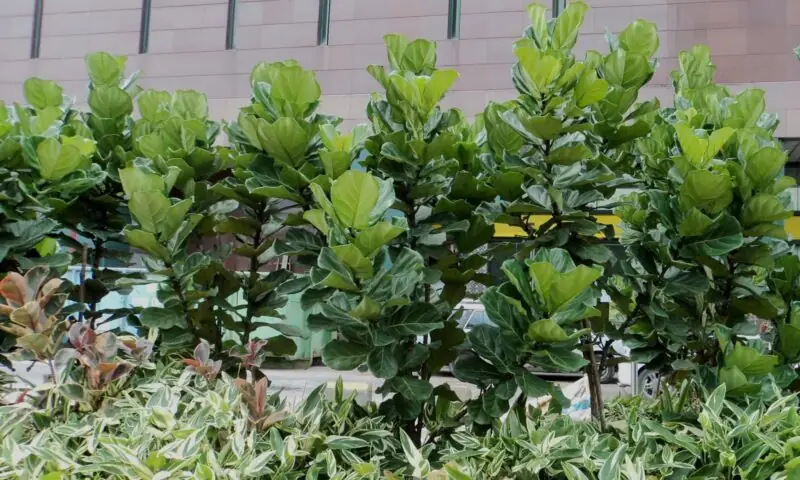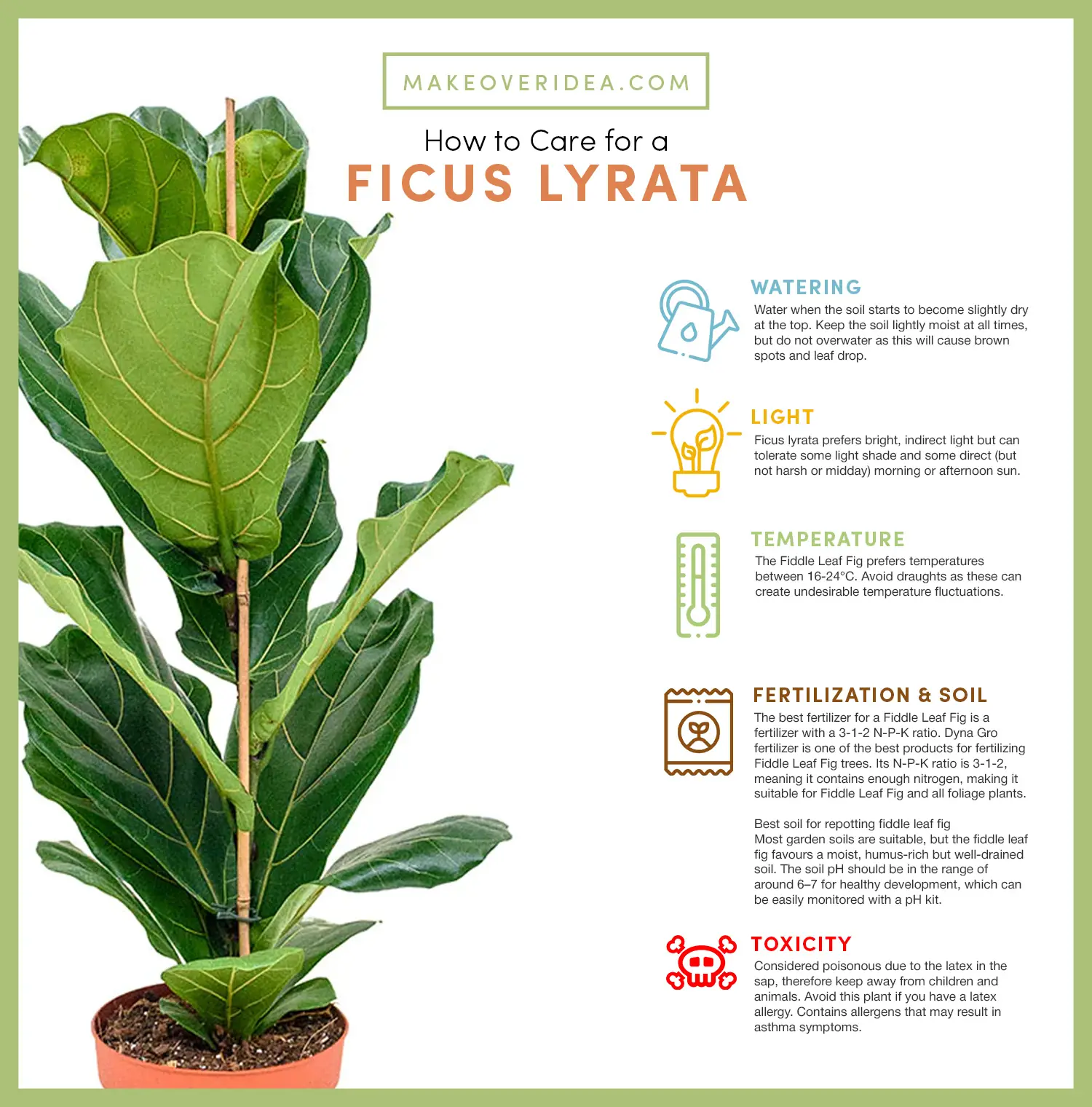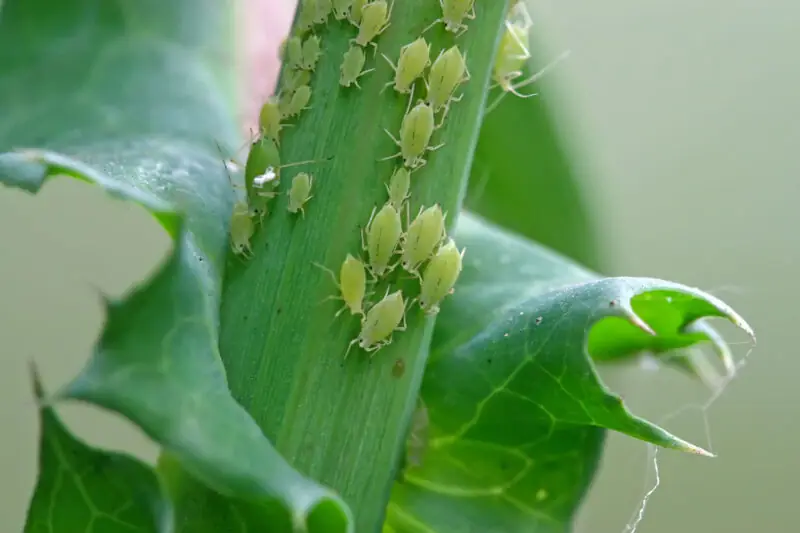Thriving in Full Sun: A Guide to Grow Fiddle Leaf Fig Outdoors

The fiddle leaf fig is definitely something you’ve heard of if you enjoy plants. The West African rainforests are the natural habitat of this lovely houseplant, commonly known as the ficus lyrata. However, did you know that a fiddle leaf fig can also flourish outside? Everything you need to know about growing a fiddle-leaf fig tree outdoors is covered in this article, including fig care, sunshine requirements, and more. Your potted fiddle can go from an indoor fiddle to an active and healthy outdoor evergreen with the help of the correct growing advice.
Fiddle Leaf Fig in Different Regions
Let’s discuss geographical variations and how they effect growing fiddle-leaf figs before moving on to outdoor care. Plant growth and maintenance requirements are influenced by the environment, which includes temperature and humidity.
For instance, fiddle-leaf figs may not do well in arid desert settings like Arizona or New Mexico because they need humidity to develop. These areas lack the humidity and water requirements for fiddle leaf fig plants.
However, fiddle-leaf fig trees grow best outdoors in coastal regions like California or Florida. They are comparable to the natural tropical rainforest habitat of the fig in that they have high humidity levels and constant temperatures between 65 and 85 degrees Fahrenheit. The fiddle leaf figs love full sun and indirect sunshine, which these zones 10 climates can give, maintaining healthy leaves and branches.
Understanding Fiddle Leaf Fig’s Native Environment
The first step is understanding the fig’s native environment. Ficus Lyrata thrives in tropical conditions. Temperatures range from around 65°F – 85°F (18°C – 29°C). They grow on forest floors where sunlight is indirect. They require high moisture levels during rainy seasons and can tolerate low light exposure.
Climate Conditions And Temperature Range
When moving an indoor potted tree outside, consider the climate. Outdoor fiddle leaf figs need a temperature range between 65°F-85°F (18°C – 29°C). Humidity levels should be up to 75% relative humidity. Even during winter, temperatures should not fall below 50°F – 55°F (10°C – 13°C). If these temperatures are not achievable, keep your fig indoors.
Fiddle Leaf Fig Hardiness Zones

When planting your ficus lyrata outdoors, identify suitable hardiness zones. The United States Department of Agriculture has a map dividing North America into climate regions. These are based on average minimum temperatures known as “hardiness zones.”
Identifying Suitable Zones for Outdoor Growth
Outdoor growth success depends on climate conditions. If you live in a warm region like Florida or Hawaii, you’re in luck! These tropical climates support healthy growth. If you live at higher elevations like Alaska, extra care is needed. Protection against cold weather is essential, so moving them indoors is necessary.
Preparing To Move Your Fiddle Leaf Fig Outside
Moving an indoor-grown ficus lyrata outdoors requires preparation. Assess the light exposure indoors and outdoors. Gradually expose your fig to outdoor light levels. Move it closer over a few weeks.
Acclimatization Process
Acclimating your plant is crucial. Start by placing it in a shady spot outside. Gradually move it into more direct sunlight. This process should take around two weeks. Watch your plant for signs of stress or damage.
Planting Your Fiddle Leaf Fig Outdoors
Now you’ve assessed and acclimated your tree, let’s talk about planting!
In-Ground vs Containers
You have two options: planting directly in-ground or using containers. Each has its advantages.
For in-ground planting, use well-draining soil with a pH between 6-7. This prevents water accumulation and root rot. For potted plants, ensure the pot size matches the tree’s height. Make sure drainage holes are present to prevent water buildup.
Soil Type And PH Requirements
Use a good quality potting mix for potted trees. Add amendments like composted manure mixed with sand for improved soil texture. Soil pH level should be slightly acidic (between 6 & 7).
Ideal Outdoor Position For Fiddle Leaf Fig
Choose an ideal position based on natural lighting patterns. Fiddle leaf figs need plenty of light, but not direct sunlight. Choose a spot with morning sun and afternoon shade.
Caring For Outdoor Fiddle Leaf Fig

Now your fig is planted outside, let’s talk about caring for your outdoor fiddle leaf fig.
Watering Requirements
Outdoor plants may need more frequent watering. Keep the soil consistently moist, but not waterlogged. During hot, dry periods, water your fig every few days. In cooler, humid conditions, once a week should suffice.
Fertilization
Fertilize your fiddle leaf fig during the growing season. Use a balanced, slow-release fertilizer every 4-6 weeks. In winter, reduce the frequency to every 8-10 weeks.
Pruning
Prune your fig to maintain its shape and size. Remove dead or damaged leaves as needed. Prune the top to encourage bushier growth. Always use clean, sharp tools to prevent infection.
Pest Control
Inspect your outdoor fiddle leaf fig for pests. Common pests include spider mites, mealybugs, and aphids. Treat infestations with insecticidal soap or horticultural oil. Remove severely infested leaves.
Cold Weather Protection
If you live in a region with cold winters, protect your fig. Move potted plants indoors before the temperature drops below 50°F (10°C). For in-ground trees, use blankets or frost cloths to cover them during cold snaps.
In conclusion, it is possible to grow a fiddle leaf fig outdoors. Keep in mind the plant’s native environment and select an appropriate location. Gradually acclimate your fig to outdoor conditions and provide proper care. With attention and patience, your fiddle leaf fig can flourish outdoors and become a stunning addition to your garden.
Dealing with Pests and Diseases

Like all living things, fiddle leaf figs have their share of pests and diseases. Here’s what you need to know:
Common Pests: Aphids and Spider Mites
Aphids and spider mites are two common pests that affect fiddle leaf figs. These tiny insects can cause damage to leaves, stunt growth, or even kill the tree if not addressed. To get rid of them, use insecticidal soap or neem oil spray as a non-toxic alternative to toxic pesticides.
Preventing and Treating Mildew
Mildew is a fungal disease that can occur when your plant is exposed to too much moisture. To prevent mildew on outdoor-grown ficus lyrata trees, ensure proper air circulation by spacing them out. If mildew already affects the foliage, use fungicide treatment to stop its spread.
Seasonal Considerations for Fiddle Leaf Fig Outdoors
Outdoor fiddles require different care depending on the season. Here’s what to keep in mind:
Summer Care and Temperature Management
During summer months, ficus lyrata trees may experience heat stress due to increased temperatures. Proper watering practices are essential for maintaining steady soil moisture content and promoting healthy growth.
Winter Protection and Moving Indoor Plant Outdoors
Winter requires additional attention because lower temperatures could lead to frostbite issues. Protect your fiddle from sudden weather changes and prolonged exposure to cold.
FAQs: Fiddle Leaf Fig Outdoors
Fiddle leaf figs are popular indoor plants that can also thrive outdoors. They make a beautiful addition to gardens or patios.
Unfortunately, fiddle leaf figs don’t produce fruit outdoors. They are impressive ornamental specimens, though, with large glossy leaves that add life wherever they grow.
Prune in early spring before new growth appears. Remove dead wood and trim branches as needed to encourage upward growth or outward branching.
Conclusion
Growing a fiddle leaf fig outdoors requires patience and dedication. Follow these tips for success:
- Choose the right climate for optimal growth
- Provide plenty of sunlight but avoid direct afternoon sun
- Water your plant regularly and ensure proper drainage
- Fertilize every 2 weeks during the growing season
- Watch out for pests and diseases
As long as you take good care of your outdoor fiddle leaf fig, it will provide years of beauty and enjoyment. Acclimate indoor plants carefully when moving them outdoors to ensure they adjust accordingly to their new environment. Avoid moving them outside too early during springtime, as temperature swings may cause stress to the plant’s overall well-being.